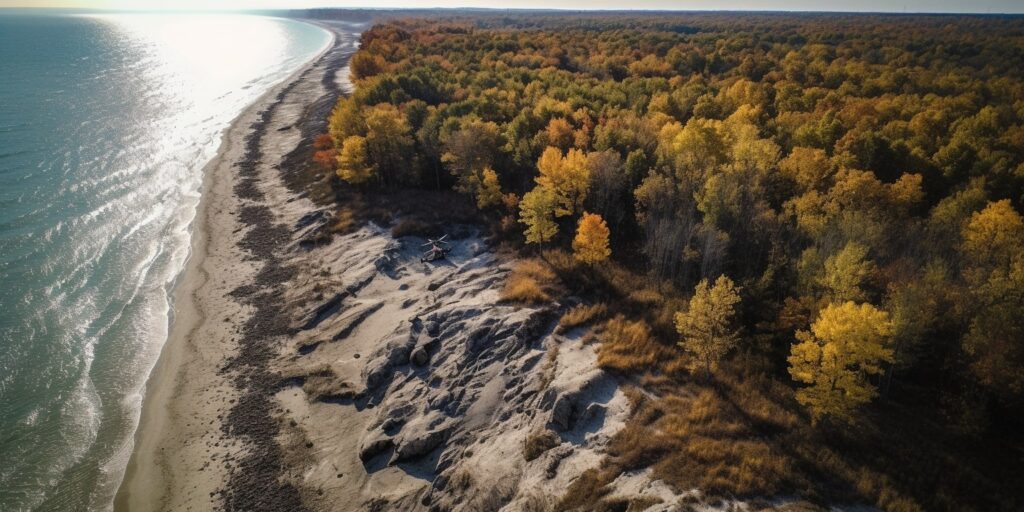Agriculture has always been at the forefront of technological innovation, and the integration of drone technology and multispectral imaging is no exception. By exploring different multispectral data interpretations for crop health assessment, farmers and agronomists can make more informed decisions, maximize yields, and minimize losses. In this article, we will dive into the world of multispectral data analysis and discuss how it can be used to optimize crop health assessments.
The Science Behind Multispectral Imaging
Multispectral imaging is a remote sensing technology that captures images at multiple wavelengths of the electromagnetic spectrum. It allows for the assessment of plant health, soil conditions, and other crucial factors that can impact crop yield and quality. By analyzing the way plants reflect and absorb light in various bands of the spectrum, it is possible to obtain a wealth of information about their current state.
Understanding Plant Stress and Disease Indicators
Multispectral data helps identify indicators of plant stress and disease by highlighting subtle differences in light absorption and reflection. Healthy plants typically reflect more green and near-infrared light than stressed or diseased plants. By analyzing these differences, farmers can identify issues early and implement targeted treatments to mitigate the effects.
Techniques for Multispectral Data Interpretation
There are several techniques for interpreting multispectral data for crop health assessment. These methods help farmers and agronomists gain valuable insights into the health and productivity of their crops.
Vegetation Indices
Vegetation indices are mathematical combinations of different spectral bands that highlight specific plant characteristics, such as chlorophyll content, leaf area, and biomass. Some commonly used vegetation indices include:
Normalized Difference Vegetation Index (NDVI): NDVI is a widely used index that measures plant greenness and overall health. It is calculated by comparing near-infrared and red light reflection, providing a reliable indicator of photosynthetic activity.
Enhanced Vegetation Index (EVI): EVI is another index that provides information on vegetation health and productivity. It is less sensitive to atmospheric conditions and background noise than NDVI, making it useful in areas with high humidity or varied soil types.
Red Edge Normalized Difference Vegetation Index (RENDVI): RENDVI focuses on the “red edge” spectral region, which is particularly sensitive to chlorophyll content. This index can help detect early signs of nutrient deficiency or disease.
Machine Learning Algorithms
Machine learning algorithms can be employed to analyze multispectral data and identify patterns that indicate crop stress or disease. These algorithms can be trained to recognize specific disease signatures, making it possible to detect and address issues before they become widespread.
Applications of Multispectral Data Analysis in Crop Health Assessment
Multispectral data analysis can be applied to various aspects of crop health assessment, including:
Disease Detection: Early identification of diseases is crucial for minimizing their impact on yield and preventing their spread. Multispectral data analysis can help detect the presence of specific diseases, enabling targeted interventions.
Nutrient Management: By identifying areas of nutrient deficiency, farmers can apply fertilizers and other treatments more precisely, reducing waste and improving overall crop health.
Irrigation Management: Multispectral data can reveal areas of water stress, allowing farmers to optimize irrigation schedules and reduce water usage.
Yield Prediction: By analyzing crop health data throughout the growing season, farmers can make more accurate yield predictions and plan for harvest accordingly.
Tools for Multispectral Data Analysis
There are several tools available for processing and analyzing multispectral data, including software platforms, cloud-based services, and artificial intelligence algorithms. These tools can help farmers and agronomists quickly process large volumes of data and generate actionable insights.
Software Platforms
Software platforms such as Agisoft Metashape, Pix4D, and MicaSense Atlas are designed specifically for processing and analyzing multispectral data. They offer features like image stitching, vegetation index calculation, and 3D modeling, which can help farmers better understand the health of their crops.
Cloud-Based Services
Cloud-based services like Google Earth Engine, DroneDeploy, and PrecisionHawk provide tools for processing, analyzing, and visualizing multispectral data. By leveraging the power of the cloud, these services can process large datasets quickly and efficiently, making it easier for farmers to access and interpret the information they need to make informed decisions about their crops.
Artificial Intelligence Algorithms
Advanced artificial intelligence (AI) algorithms can be used to analyze multispectral data and identify patterns that may indicate the presence of crop diseases or other issues. These algorithms can be trained to recognize specific disease signatures and predict the likelihood of disease outbreaks, helping farmers take preventive measures to protect their crops and reduce the impact of diseases on yield.
The Future of Multispectral Data Analysis in Agriculture
As drone technology and multispectral imaging continue to advance, we can expect even more powerful tools and techniques for crop health assessment. Innovations in sensor technology, data processing, and machine learning algorithms will enable farmers to monitor their crops with greater precision and make better-informed decisions about how to manage risks and maximize yields.
Conclusion
Exploring different multispectral data interpretations for crop health assessment is revolutionizing agriculture, enabling farmers to make more informed decisions and optimize their crop management practices. By leveraging this technology, we can help ensure a more sustainable and prosperous future for agriculture.
If you’re interested in learning more about how drone technology is transforming agriculture, we encourage you to visit our comprehensive guide: Soaring High: A Comprehensive Guide to Building and Growing Your Drone Business. This guide will provide valuable insights and information on how to harness the power of drone technology in your farming operations.
If you require any drone services, please don’t hesitate to contact Blue Falcon Aerial. Our team of experts is here to help you harness the full potential of drone technology for your agricultural needs.




